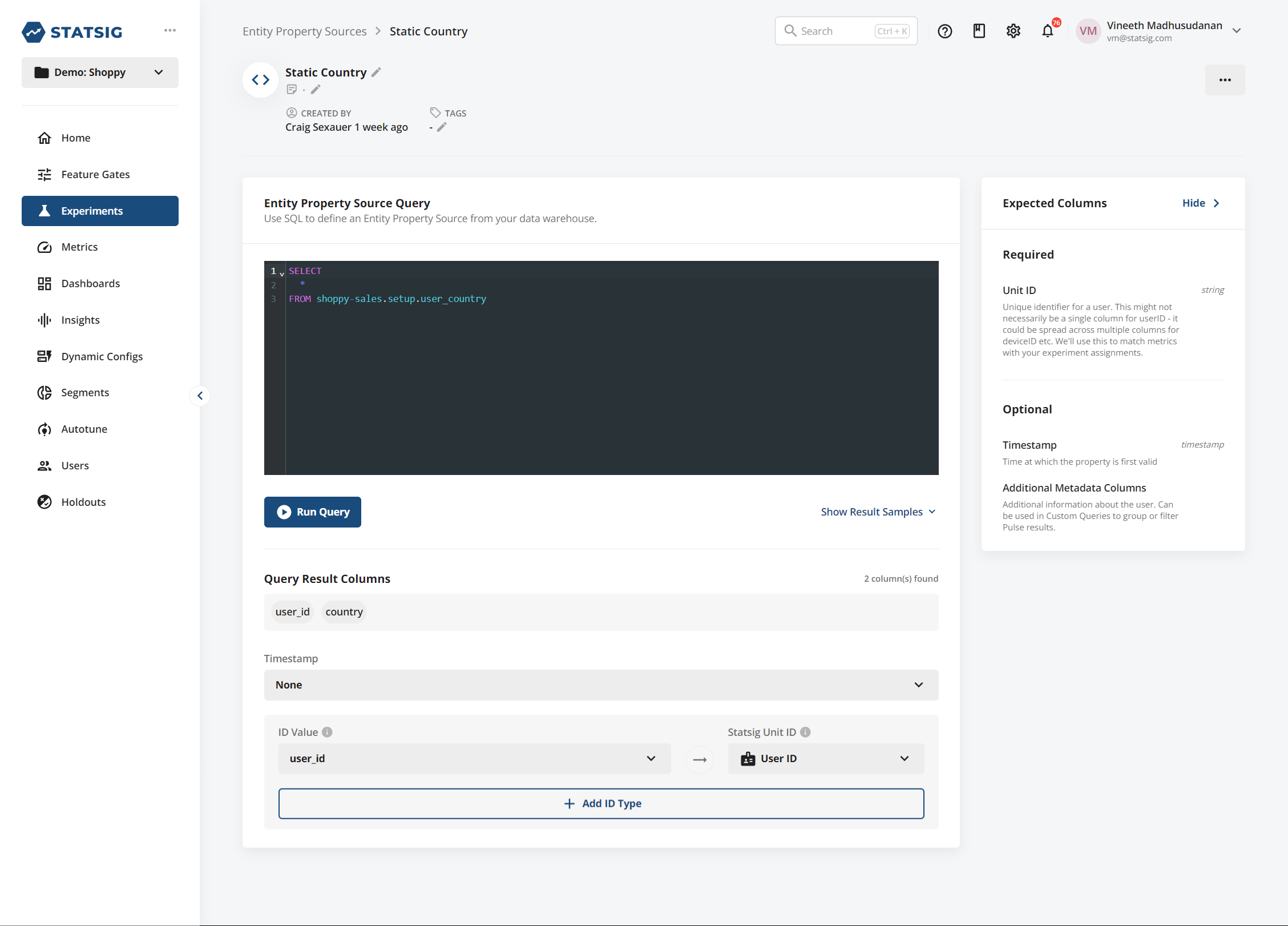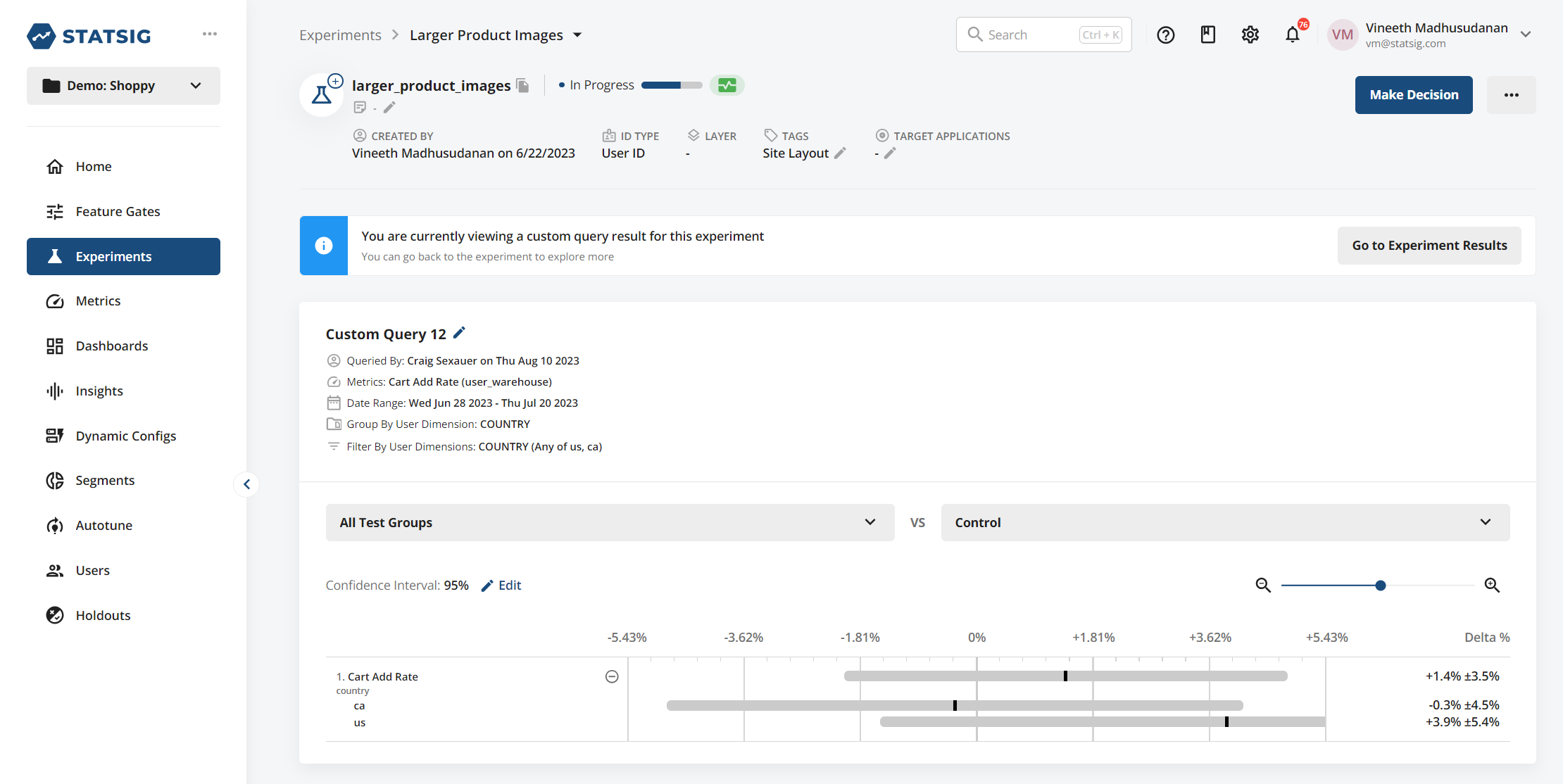

Example Data
For property sources, Statsig only needs a user_id and property fields. Property sources can define fixed properties (e.g. a users Country of origin), but can also define dynamic in which case you need to provide a timestamp for Statsig to identify the most recent pre-exposure record.| Column Type | Description | Format/Rules |
|---|---|---|
| timestamp | Optional an identifier of when the property was defined. Required for dynamic properties | Castable to Timestamp/Date |
| unit identifier | Required At least one entity to which this metric belongs | Generally a user ID or similar |
| property columns | Required Fields which can be used to group by and filter results in exploratory queries |
| user_id | company_id | country |
|---|---|---|
| my_user_17503 | c_22235455 | US |
| my_user_18821 | c_22235455 | CA |
| user_id | timestamp | company_id | intent_segment | spend_segment |
|---|---|---|---|---|
| my_user_17503 | 2023-10-10 | c_22235455 | high_intent | high |
| my_user_17503 | 2023-10-11 | c_22235455 | high_intent | high |
| my_user_17503 | 2023-10-12 | c_22235455 | mid_intent | high |
| my_user_18821 | 2023-10-10 | c_22235455 | low_intent | low |
| my_user_18821 | 2023-10-11 | c_22235455 | low_intent | mid |
| my_user_18821 | 2023-10-12 | c_22235455 | low_intent | mid |
2023-10-12; based on what the intent_segment was prior to their exposure, they might have different intent_segment values for different experiment analyses.
